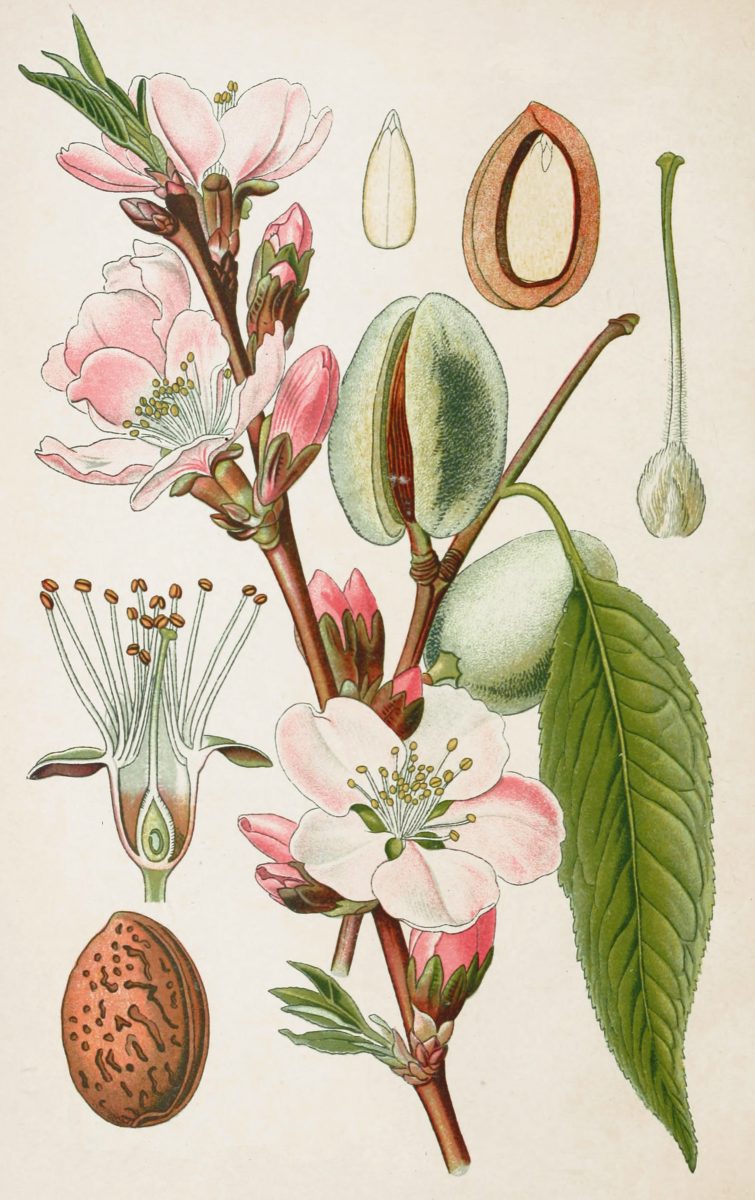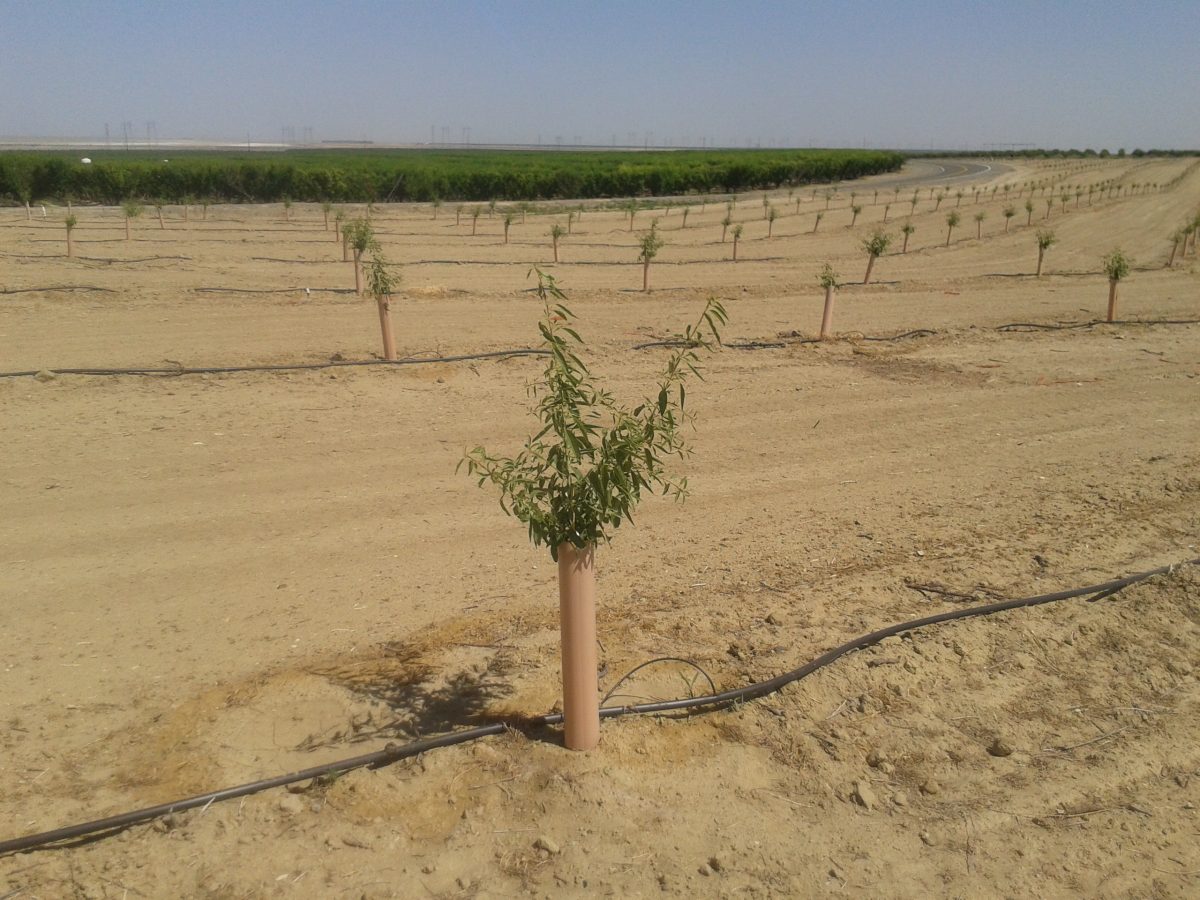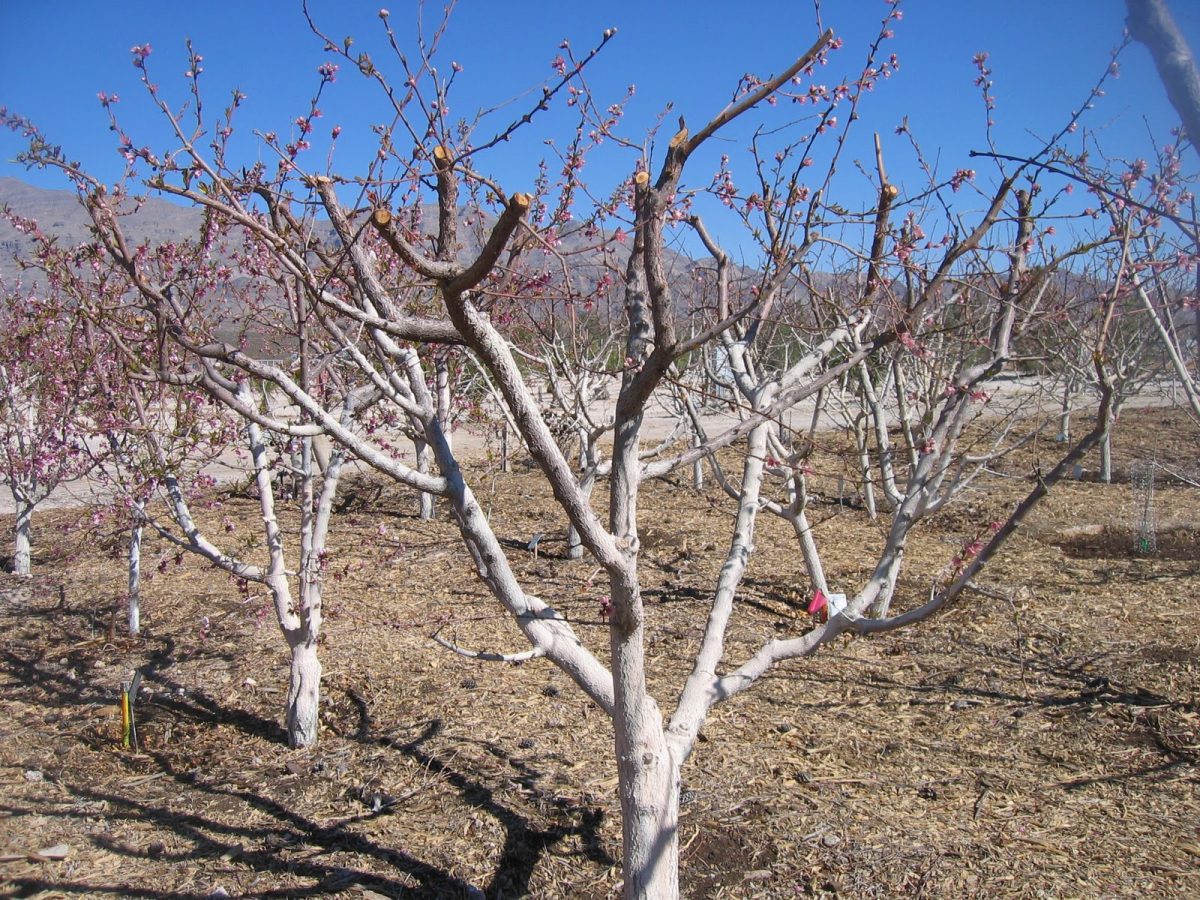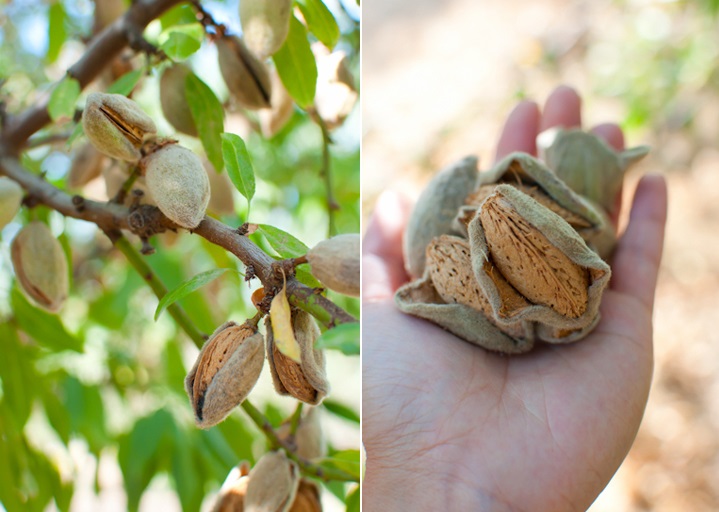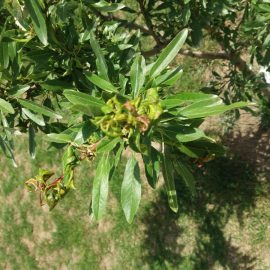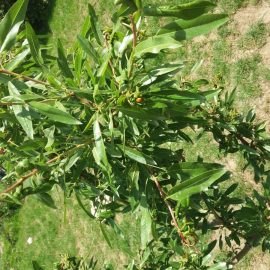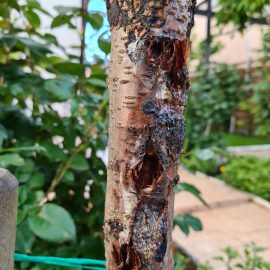Almond, planting, growing and harvesting
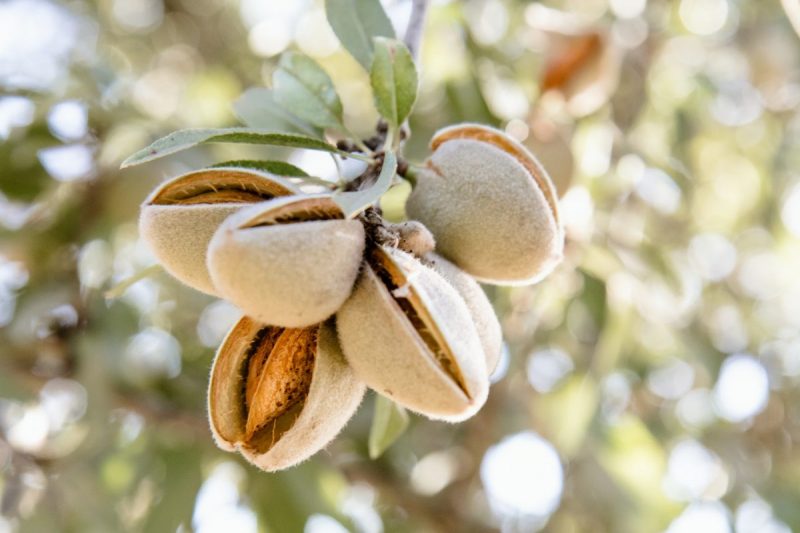
Almond (Amygdalus communis) is a fruit tree that is part of the Rosaceae family, appreciated for its fruits. Almond fruits are eaten fresh or used in the food, pharmaceutical industries, etc. It’s important to mention that almond blossoms very early and can be affected by late frosts. Also, a limiting factor in almond growing is the temperature
Growing and fruiting particularities
In the first years after planting, the almond has a rapid growth. The stem can grow up to 12 meters. This species also forms many anticipated branches, which help to form the crown rapidly. Almonds have short internodes and form mixed and vegetative buds arranged in groups. It is an early species, that bears fruits after 2-3 years, and the maximum yields are obtained starting with year 8.
The flowers are hermaphroditic, white-pink. It is a self-sterile species, and pollination is entomophilous. In the orchard, it is recommended to plant 2-3 varieties to ensure proper pollination. The leaves are lanceolate and have a serrated edge. It differentiates flower buds annually and is not affected by alternate bearing.
Almond varieties bear fruit on mixed branches (40-60 cm). The fruit is a drupe that carries the seed inside (almond nut). They have an oblique shape and the color is brown.
Climate and soil requirements
It has a short vegetation period and can be affected by autumn and spring frosts. It grows and develops optimally in areas where the average annual temperature is 10.5 – 11 °C. Vigorous and well-maintained almond trees withstand temperatures down to -27 °C. The optimum temperature vegetative growth period is 17-18 °C, but it can tolerate excessive summer temperatures well.
Almond tree prefers areas where 400 – 450 mm of rainfall falls annually, but can also use water from irrigation. It has high light demands, therefore, it must be planted on lands with southern exposure. It is not pretentious to the soil, the root system makes good use of stony soils, nutrient-poor soils, and calcareous soils, but it is pretentious to the soil aero-hydric regime.
Cultivation
Soil preparation
When planting, must be taken into account the climate and soil requirements of the plant. Generally, the land should be south-facing, sheltered from cold winds and the annual rainfall should not be less than 300 mm/year. The soil needs to be prepared in summer.
The land should be cleared of plant debris. The next step is to plow to a depth of 30 cm. If the soil profile is thin, reduce plowing depth. If necessary, the soil can be leveled.
Planting
The optimal time for planting is in early spring because those planted in autumn dehydrate strongly and recover harder. In the classical cultivation system, is recommended a distance of 5 × 5 m. After establishing the planting scheme, the land should be picketed. The operation consists of marking the position of each plant on the field with a stake.
Two to three different varieties must be planted in the plots so that pollination takes place normally. Thus, you can plant a basic variety and two pollinator varieties. It is recommended that for every two rows of the basic variety, to plant one row of the pollinator variety. The next steps are digging holes and planting them. The pits can be made manually or mechanically. The holes can be 40 x 40 x 40 cm.
Root trimming
Before planting, the roots must be trimmed. The purpose of this procedure is to remove the damaged portions and maintain a healthy root system. The necrotic roots must be completely removed, and the healthy ones, shortened to 15-20 cm.
After trimming, the roots can be soaked. Mudding is placing the roots in a mixture of yellow soil, fresh manure, and water. The role of the mud layer is to ensure a higher humidity around the root system. The mud must have the consistency of sour cream. If planting is done in dry periods, each seedling must be watered with about 10 liters of water.
Weed control
Since almond trees are often planted in dry areas, it is recommended to keep the interval between rows free of weeds. This operation can be done by repeated hoeings.
Fertilization
It is done depending on the soil’s supply of nutrients. The almond tree reacts well to foliar fertilization or fertigation. Chemical fertilizers based on nitrogen, phosphorus, and potassium can also be applied.
Recommended products
-
You can find products on a different store
Change Store -
You can find products on a different store
Change Store -
You can find products on a different store
Change Store -
You can find products on a different store
Change Store -
You can find products on a different store
Change Store -
You can find products on a different store
Change Store -
You can find products on a different store
Change Store -
You can find products on a different store
Change Store -
You can find products on a different store
Change Store -
You can find products on a different store
Change Store -
You can find products on a different store
Change Store -
You can find products on a different store
Change Store -
You can find products on a different store
Change Store -
You can find products on a different store
Change Store -
You can find products on a different store
Change Store -
You can find products on a different store
Change Store -
You can find products on a different store
Change Store -
You can find products on a different store
Change Store -
You can find products on a different store
Change Store -
You can find products on a different store
Change Store -
You can find products on a different store
Change Store -
You can find products on a different store
Change Store -
You can find products on a different store
Change Store -
You can find products on a different store
Change Store
You can irrigate in dry periods and in areas where the annual rainfall does not exceed 300 mm. The most favorable watering methods are micro-sprinkling and drip irrigation. In general, almond needs irrigation in spring before flowering at the fruit buds differentiation and during the fruit set period.
Pruning
In the first 3-4 years after planting, it can be carried out prunings for crown formation. In the first year, in spring, the tree should be shortened to a height of 80 cm above an outward-facing fruit bud. After it starts growing, all the buds and shoots must be removed from the trunk area up to a height of 50 cm. During the summer (August) choose 3-4 twigs evenly arranged on the tree to form the future crown.
Recommended products
-
You can find products on a different store
Change Store -
You can find products on a different store
Change Store -
You can find products on a different store
Change Store -
You can find products on a different store
Change Store -
You can find products on a different store
Change Store -
You can find products on a different store
Change Store -
You can find products on a different store
Change Store -
You can find products on a different store
Change Store -
You can find products on a different store
Change Store -
You can find products on a different store
Change Store -
You can find products on a different store
Change Store -
You can find products on a different store
Change Store -
You can find products on a different store
Change Store -
You can find products on a different store
Change Store -
You can find products on a different store
Change Store -
You can find products on a different store
Change Store -
You can find products on a different store
Change Store -
You can find products on a different store
Change Store -
You can find products on a different store
Change Store -
You can find products on a different store
Change Store -
You can find products on a different store
Change Store -
You can find products on a different store
Change Store -
You can find products on a different store
Change Store -
You can find products on a different store
Change Store
In the spring of the second year, choose the main twigs. If they are longer than 60 cm, shorten them so that they are all the same length. During the summer, all water sprouts and those growing on the main branches’ topside must be removed.
In the third year, the second crown level begins to form. The extension branch of the main axis should be cut above an outward-facing shoot. On the main branches, leave a vigorous sprig, about 50 cm from the central axis and facing outwards from the crown.
Remove the twigs growing on the upper part of the branches (the crown).In the fourth year, select a branch for the third crown level. It must be 30 cm from the top level (second). All competing, water sprouts and inward-facing branches should be removed. To normalize the fruit load, shorten the annual branches to 4-5 buds.
After this period, the almond pruning must ensure balanced fruiting, keep the crown airy, and eliminate the weak branches, the dry ones, and those affected by frost.
Recommended products
-
You can find products on a different store
Change Store -
You can find products on a different store
Change Store -
You can find products on a different store
Change Store -
You can find products on a different store
Change Store -
You can find products on a different store
Change Store -
You can find products on a different store
Change Store -
You can find products on a different store
Change Store -
You can find products on a different store
Change Store -
You can find products on a different store
Change Store -
You can find products on a different store
Change Store -
You can find products on a different store
Change Store -
You can find products on a different store
Change Store -
You can find products on a different store
Change Store -
You can find products on a different store
Change Store -
You can find products on a different store
Change Store -
You can find products on a different store
Change Store -
You can find products on a different store
Change Store -
You can find products on a different store
Change Store -
You can find products on a different store
Change Store -
You can find products on a different store
Change Store -
You can find products on a different store
Change Store -
You can find products on a different store
Change Store -
You can find products on a different store
Change Store -
You can find products on a different store
Change Store
Harvesting
Almond harvesting is done at full maturity when the mesocarp cracks and the seeds fall easily. It is recommended to harvest manually, so as not to destroy the fruits. In large orchards, the harvest is mechanized.
After harvesting, the fruits must be peeled and dried in the sun for 3-4 days. Storage is done in dry, well-ventilated warehouses and away from rodents.














































































































































































































































































































































































































































